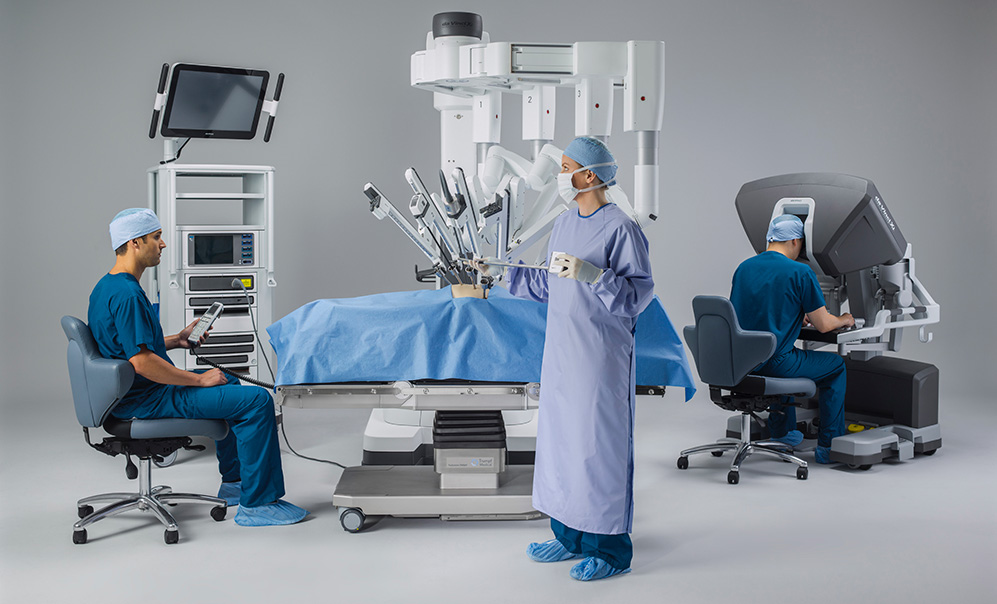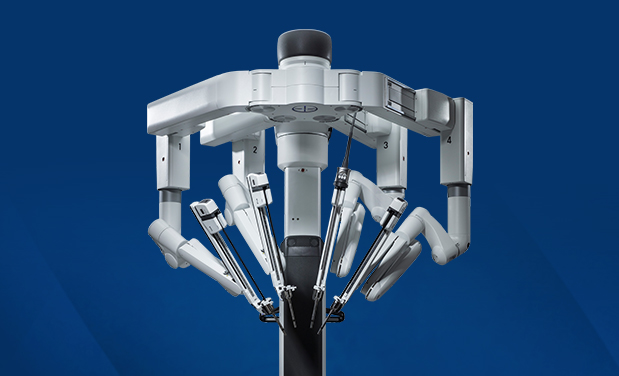Robotic Surgeries have been on the rise lately as a revolutionary tool in the field of medicine and surgeries. The term “Robotic Surgery” mainly refers to the case where surgeries are performed with the assistance of robotic systems allowing surgeons to perform complex operations through very miniature incisions and resulting in better outcome and enhanced patient recovery.
Robotic-Assisted Urologic Procedures
Many urologic procedures are performed through the robot but the 3 most essential urologic surgeries through robot are:
– Partial and Total Nephrectomy (kidney surgery)
– Prostatectomy (prostate surgery)
– Cystectomy (bladder surgery)
Robotic Surgeries in Middle East
Kidney Surgery (in case of kidney cancer)
When kidney cancer is diagnosed, your doctor may recommend a partial nephrectomy (the surgeon removes also the tumor, in order to preserve as much healthy kidney tissue as possible); or a radical nephrectomy (the surgeon removes all the affected kidney).
Surgeons can perform kidney surgery through open surgery or minimally invasive surgery.
Traditional open surgery is performed through a long incision in your side, abdomen, or back; and during this procedure, the surgeon looks directly at the surgical area and removes part or all of the kidney using hand-held tools.
The best minimally invasive procedure to perform a kidney surgery (radical or partial nephrectomy) is robotic-assisted surgery, possibly with da Vinci technology.
Surgeons using the da Vinci system may be able to perform kidney surgery through a few small incisions (cuts) and a 3D high-definition vision system using tiny instruments.
When the nephrectomy through the robot is done, the patient:
– Will not present any complications.
-Will stay in the hospital for one or two days maximum.
-Will not lose a lot of blood.
-May experience less pain.
-Through the robot, we can complete lymph node dissections that may match or surpass what most experienced open surgeons are able to offer.
Prostate Surgery
In case of a prostate cancer, the robotic surgery has an essential role in tumor resection; without causing incontinence and erectile dysfunction.
A radical prostatectomy can be performed through open surgery, which requires a large incision in your abdomen, or a minimally invasive technique.
There are two minimally invasive techniques: laparoscopic prostatectomy and robotic-assisted prostatectomy, possibly with da Vinci technology.
With the da Vinci system, the surgeon can achieve the procedure with more precision through small incisions; while the cancerous prostate gland is resected with clarity, the erectile function is not affected most of the time and the patient experiences a faster return of urinary continence.
Through the robot, the patient may stay in the hospital for a shorter amount of time and the urinary catheter is no longer kept for several days.
Bladder surgery
A cystectomy is a major surgery to remove all the bladder (radical cystectomy) or part of the bladder (partial cystectomy), and this procedure helps to treat bladder cancer.
When the disease is in an advanced stage, the bladder should be removed completely. Through the traditional surgeries, people needed to have an external pouch to collect their urine; but now with the robot which gives more precision, surgeons have developed ways to construct a bladder substitute: a neobladder (your urologist uses a long piece of the small intestine to create a continent reservoir to store urine).
Bladder cancer presents a special challenge for robotic surgery which has multiple advantages for patients:
– A better view of the tissue through the 3D high-definition view.
-Less blood loss than open surgery.
-Low risk of complications and infections.
-Decreased pain.
-Shorter recovery period especially for a partial cystectomy.




